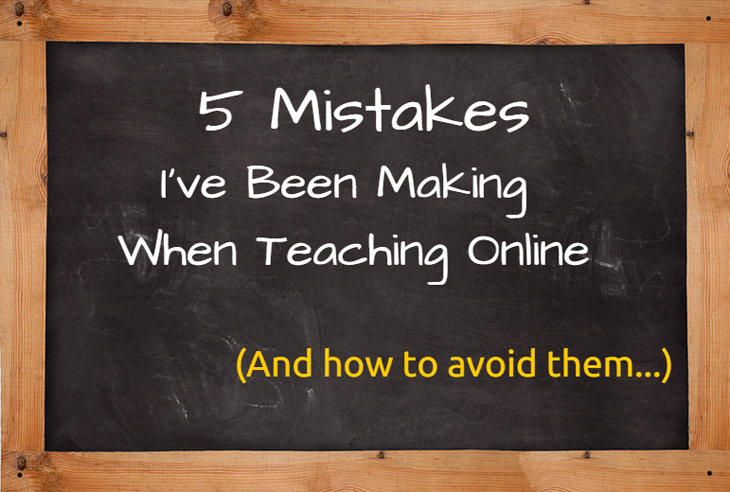
But don’t make the mistakes I’ve made during the last 15 years. I’ve been aware of a few of them, but others never dawned on me until I took Danny Iny’s “Course Builders Laboratory” earlier this year. He’s launching it again this week, and even if you’re not quite sure if this is for you, watch the replay before 9 a.m. Eastern Time tomorrow morning, Tuesday. (There was so much interest in this free training, they’re leaving it up a little longer.)
And then decide if you want to dive into this profitable revenue stream.
Here are my mistakes, in no particular order.
1. Relying too much on low pricepoint training.
A 90-minute webinar that attracts only 10 people at $49.95 per seat takes as much work as one that attracts 100.
Not only do I have to research my topic, I have to create the training and market it via email, social media, content creation, etc.
When you offer mostly low pricepoint products, you must rely on highvolume.
How to avoid this mistake: Offer higher-priced in-depth courses.
2. Watching content go stale.
Recording webinars using GotoWebinar and then selling the replays has worked well for me because I have a loyal fan base and a cadre of what I call “super fans,” people who want to learn almost everything I teach.
The problem is that with some topics that require a lot of technical skills, the more time goes by after the live call, the more the technology changes and the more stale the content becomes. Updating my 52 $10 special reports and my 700-page ebook, How to be a Kick-butt Publicity Hound, was a Herculean task.
How to avoid this mistake: Teach a big course online once or twice a year. The content will be fresh, and when you repeat it, simply update it.
3. Guessing about topics my audience wants.
I pay attention to questions people email to me. That’s usually a good indication of what they’re willing to pay to learn.
But people don’t know what they don’t know. Some don’t know, for instance, the important of hashtags, a powerful search tool.
My webinar a year and a half ago on How to Use Hashtags, the New Search Tool, was well-attended, but I was expecting double the number of people.
How to avoid the mistake: Tell people you’re thinking of offering training on a certain topic and ask if it’s something they’d be interested in. If they answer is “no,” ask why. You can test the waters several other ways before investing a lot of time and effort. Danny’s webinar explains them.
4. Not offering a pilot program for an in-depth course.
Before my Author Email Boot Camp this past spring, I offered only one other in-depth training course for some fast cash: How to Find Your Target Market. I made about $8,000 on the course, but had I used a pilot, I could have gotten feedback and improved it.
A pilot lets a small group of students take the course at a discount, with the understanding that they will provide feedback on how you can make it better. My students gave me two valuable suggestions:
- Offer a series of flow charts that explain the intricate puzzle of email marketing. This will help visual learners and serve as valuable cheat sheets when they get stuck.
- Offer a glossary of terms. Students told me they didn’t know the difference between an opt-in box, a sign-up form, and a subscription form. They’re all the same. But I was using the terms interchangeably, unaware that was confusing my students.
How to avoid this mistake: Roll out the course as a pilot first. Pay attention to comments and questions during the training and afterward. When you offer the bigger, better course, make sure the content answers the earlier questions, and correct the missteps.
5. Too little interactivity.
Offering a webinar? Let them ask questions in GotoWebinar’s Q&A box and I’ll answer them. Problem solved, right?
If I get email questions from customers who bought the training and are watching the replay, or from those reading my digital products, I answer them. It’s that simple. Or so I thought.
Students need a lot of interactivity, starting from the moment they sign up for a high-priced course. It reinforces that you’re taking care of them, you’re sensitive to their needs and that there’s a fun, rewarding experience on the horizon.
How to avoid this mistake: Danny recommends onboarding, a word I hadn’t heard before. For an in-depth course, it can be a questionnaire you ask students to complete, or a quick quiz they can take.
For a lower price courses, it can be a simple follow-up message asking students to reply and state the one question that is most perplexing about the topic you’re going to teach. His course teaches lots of other ideas for onboarding.
My coach, made available as part of Danny’s course, also listened in on most of the webinars and offered valuable feedback about the way I was teaching. I’ve stopped trying to squeeze 40 pounds of content into a 20-pound bag. (Thanks, Rocky!)
I have a lot of work to do to get the Author Email Boot Camp ready for next month. While I’m doing that, I hope you’re checking out Danny’s webinar which disappears at 9 a.m. Eastern Time tomorrow morning.